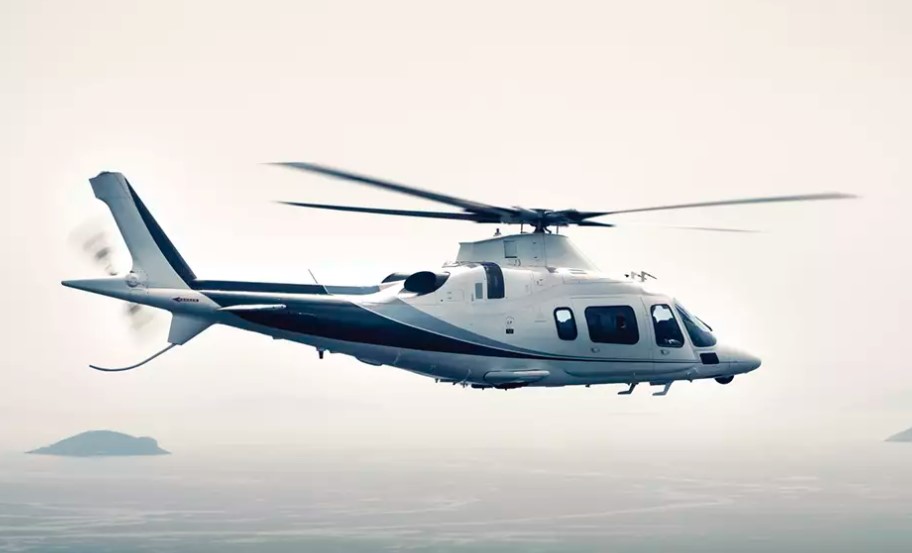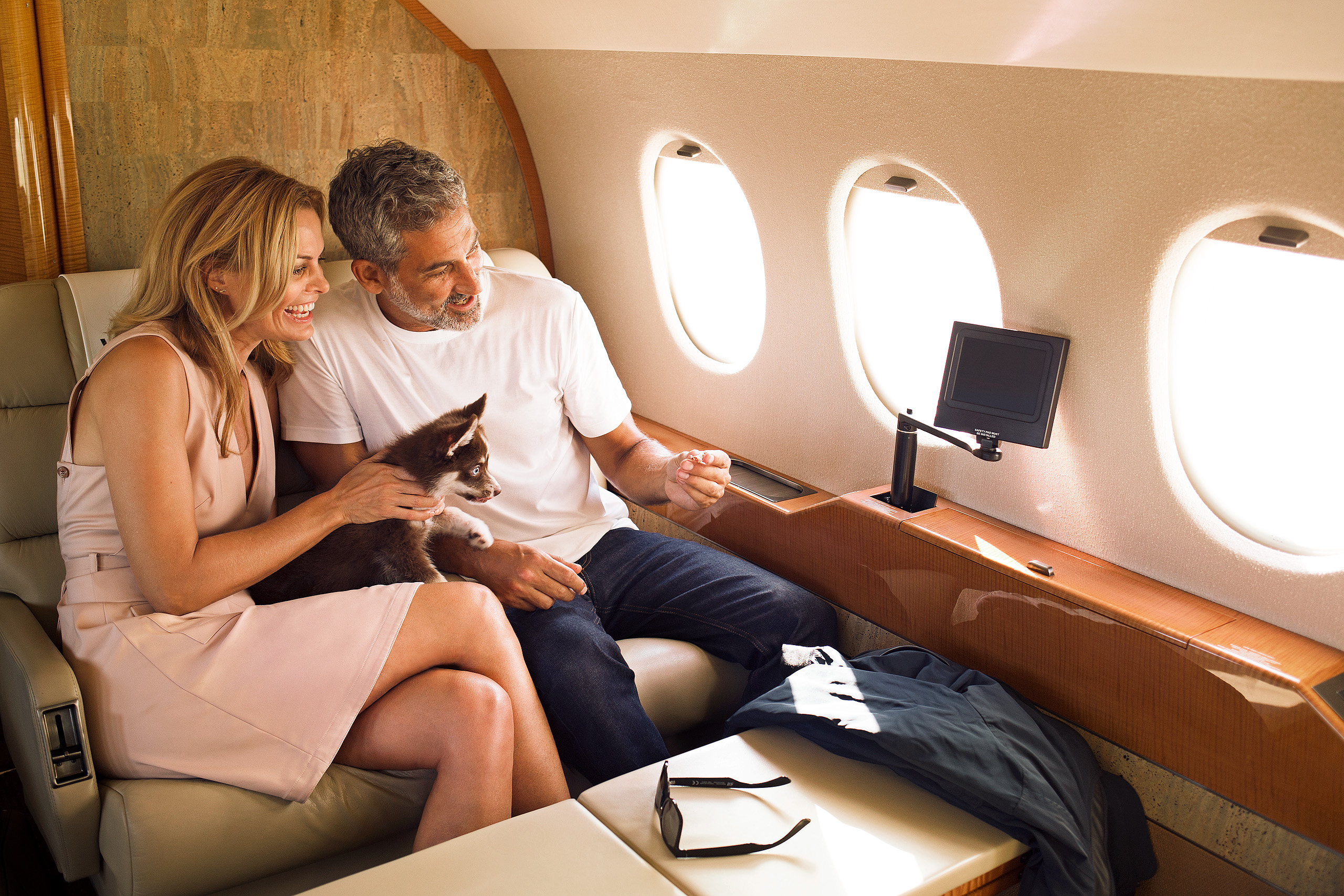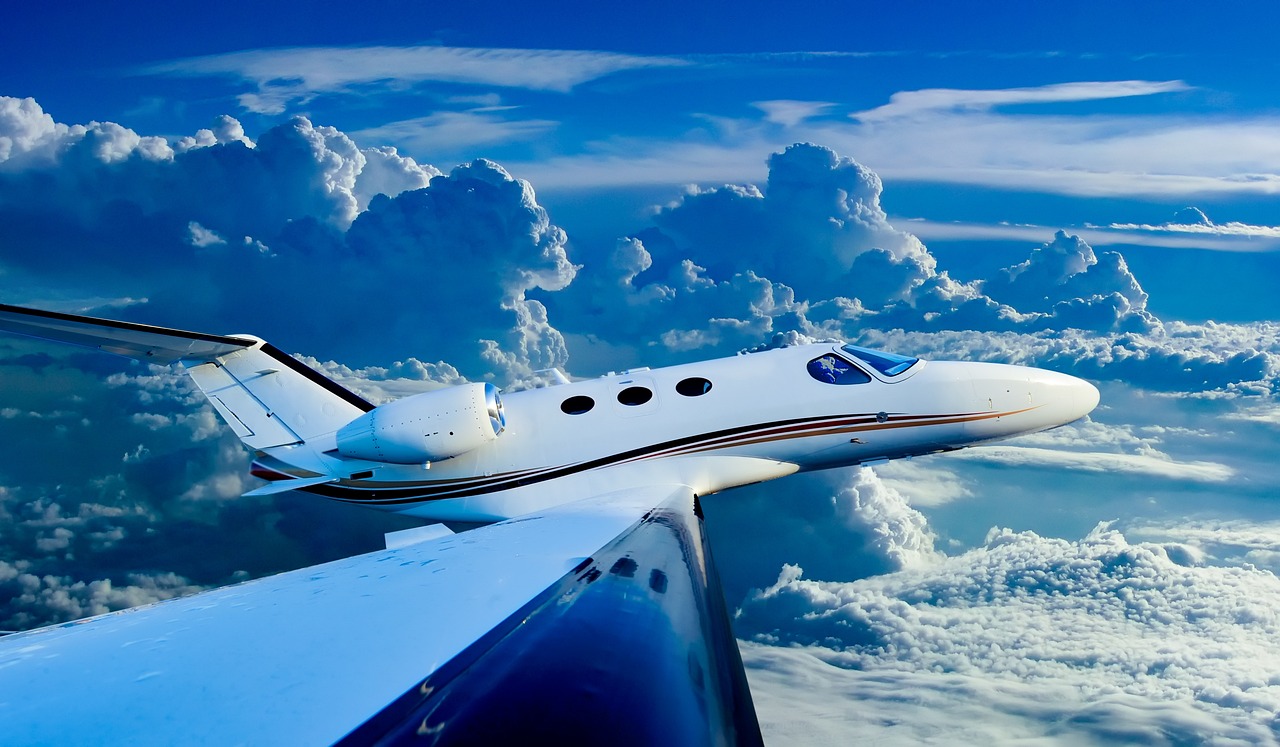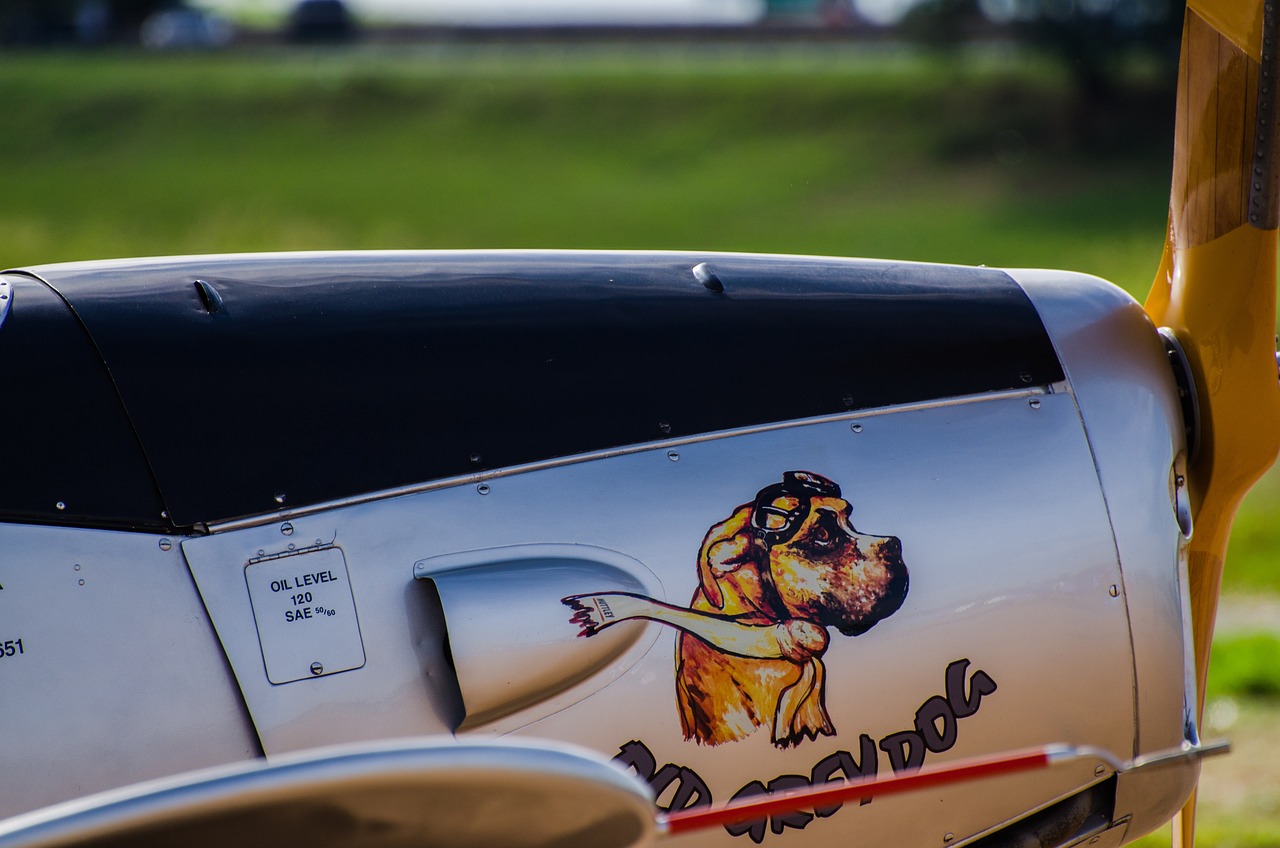Panos Karagiannis
Discover Greece from the Sky: The Ultimate Guide to Helicopter Rentals and Island Hopping Adventures
Greece, with its vibrant cultural heritage and stunning natural beauty, offers a unique way to elevate your travel experience: renting a helicopter. This article covers the top five reasons why helicopter rentals in Greece can enhance your adventure, providing unmatched experiences and perspectives that will stay with you forever.
Let’s get started!
1. Reach Isolated Destinations
Greece boasts over 6,000 islands, each with its own unique charm. While some islands are easily accessible by ferry or boat, others are more remote and harder to reach. Renting a helicopter allows you to explore these hidden gems and secluded spots effortlessly. Whether you're island hopping or visiting uninhabited islets, a helicopter makes it easy and convenient to reach remote locations.
Example: Imagine flying directly from Athens to the secluded island of Kythira, which is difficult to access by traditional means. A helicopter ride gets you there swiftly and comfortably, allowing you to spend your day exploring untouched beaches, medieval castles, and charming villages without the hassle of long ferry rides and transfers.
2. Experience Breathtaking Aerial Views
Greece is home to some of the most stunning landscapes on Earth, from the iconic whitewashed buildings of Santorini to the dramatic cliffs of Meteora and the crystal-clear waters of the Aegean Sea. Renting a helicopter gives you access to panoramic views that far surpass what you can experience through traditional travel methods, offering a unique perspective rarely seen by most travelers.
Example: A helicopter flight over Santorini's caldera at sunset provides an unforgettable view of the island’s unique volcanic landscape. The contrast of white buildings with blue domes against the deep blue sea and the orange hues of the setting sun creates a magical scene best appreciated from the air.
3. Capture Stunning Photographs
Helicopter rentals in Greece offer unparalleled opportunities for capturing incredible aerial photographs and videos. With unobstructed views from above, you can photograph Greece’s landscapes, landmarks, and coastline in breathtaking detail. Whether you're a professional photographer or an amateur looking to document your travels, a helicopter offers the perfect vantage point for creating lasting memories.
Example: Picture capturing a bird’s-eye view of Navagio Beach on Zakynthos, where a shipwreck lies on pristine white sands surrounded by towering cliffs. The striking contrast between the turquoise waters and the rugged terrain makes for a captivating photograph.
4. Enjoy Luxurious Comfort
Renting a helicopter in Greece provides a luxurious and comfortable travel experience that surpasses conventional transportation options. Modern helicopters feature plush interiors, state-of-the-art amenities, and personalized service, offering VIP treatment that ensures a memorable journey. Whether traveling for business or leisure, a helicopter rental allows you to indulge in premium comfort and convenience.
Example: Traveling from Mykonos to Santorini in a private helicopter means avoiding crowded airports and long waits. Instead, you can relax in a spacious, air-conditioned cabin with leather seats, enjoying refreshments and stunning views below. The journey itself becomes an integral part of your vacation experience.
5. Create Lasting Memories
Renting a helicopter in Greece is more than just transportation; it’s about creating lasting memories. From the thrill of liftoff to the awe-inspiring views below, every moment in the air is filled with wonder and delight. Choosing a helicopter rental offers a unique and unforgettable way to discover Greece, with benefits ranging from breathtaking aerial panoramas to access to remote locales, luxurious experiences, and stunning photography opportunities.
Example: Imagine a surprise romantic proposal while flying over the beautiful landscapes of the Cyclades. The intimate setting, dramatic scenery, and exclusivity of a private helicopter ride create a magical moment that you and your partner will cherish forever.
Your Greek Adventure Awaits
We’re sure you have at least one friend who can’t stop raving about their amazing holidays in Greece. It’s okay to admit a bit of jealousy, which has led you to plan your very own Greek getaway. Most trips to Greece begin in Athens, and we have plenty of suggestions for fun activities in the capital. However, we suspect you're most excited about epic Greek island hopping.
We fully support your enthusiasm (because you're right, touring the islands is one of the most unique things to do in Greece, especially in the summer, whether it's a long stay or a weekend trip). So, here’s our essential advice on how to tour the Greek isles or escape on a day trip from Athens – all signed, sealed, and delivered for you, fellow adventurer.
Best Greek Island Hopping from Athens, Crete, Santorini, and Mykonos
First, let’s clarify what we mean by ‘Greek islands.’ While this might seem like a basic question, it’s important to understand so you can choose the best options for your trip. Greece’s islands are grouped into eight clusters, but we’ll focus on the most popular destinations within each group:
- Cyclades: Mykonos, Tinos, Naxos, Paros, Antiparos, Santorini, Sifnos, Serifos, Milos, Amorgos, Folegandros
- Northern Aegean Islands: Chios, Lesvos, Lemnos, Samos
- Dodecanese: Patmos, Kos, Rhodes, Symi
- Ionian Islands: Kefalonia, Corfu, Ithaca, Zante
- Sporades: Skiathos, Alonissos, Skyros
- Saronic Islands: Hydra, Spetses, Poros, Aegina
Additionally, Evia can be reached by car from Athens, and Crete stands alone due to its size and cultural richness.
Travel Options
Now that you have an idea of your destination options, it's time to decide how to travel between them. Depending on your schedule, destinations, and preferences, you have several travel options: ferry, hydrofoil, catamaran, plane, private boat, or helicopter.
For floating transportation, Athens offers three ports: Piraeus, Lavrio, and Rafina. Piraeus is accessible by taxi, bus, metro, or train, while Lavrio and Rafina can be reached by cab or bus. Note that ferry schedules vary, so you may need to spend some time in Athens before catching a boat. Also, some islands are only reachable from ports outside Athens, such as Ithaca, Zante, and Kefalonia from Kyllini port, or Paxos from Igoumenitsa.
For flights, Athens International Airport (El. Venizelos) is your go-to, accessible by taxi, bus, metro, or suburban railway.
Islands Close to Athens
The Saronic Islands are the closest to Athens, reachable by hydrofoils, catamarans, or conventional ferries within 45 minutes to 3.5 hours. These islands make great day trips from Athens, even without a detailed itinerary.
The Far-Off Islands
Crete, the Dodecanese, and the Northern Aegean islands are the furthest from Athens, requiring 8-16 hours by ferry or a much faster plane ride. Ferry rides often depart in the afternoon, allowing you to sleep overnight and arrive the next morning. Flights are more efficient but book early for the best deals, especially during peak season.
Islands In-Between
The remaining Greek islands fall somewhere in-between in terms of travel time, typically 3-6 hours. The Cyclades, some Ionian, and Sporades islands belong to this category. Travel options include a combination of car and ferry, conventional ferries from Piraeus or nearby ports, catamarans, or flights for islands with airports like Mykonos, Zante, Paros, Santorini, Naxos, Corfu, Skiathos, and Kefalonia.
Where to Stay
Accommodation options on Greek islands range widely, from budget-friendly rooms to luxury hotels. Prices can be as low as €50 per night for simple lodgings in low-profile islands like Amorgos and Chios, to over €3000 per night for top-tier luxury in Mykonos and Santorini. Most accommodations fall within the €250 per night range. Options include family-run hotels, boutique hotels, large resorts, and Airbnb. If visiting during peak season (end-July or August), book well in advance.
Things to Do
Each Greek island offers unique experiences. Greek hospitality is renowned, but local culture, food, and attractions can vary significantly. Islands may feature sandy beaches or rocky landscapes, bustling towns or quiet retreats. Common activities include swimming, dining, and exploring local culture. Look for unique experiences like boat trips to secluded beaches (e.g., Balos in Crete), visiting archaeological sites, admiring architecture, enjoying local crafts and art exhibitions, hiking, culinary tours, and photography tours. Research each destination to discover its hidden gems.
Choosing Your Island
Here’s a brief guide to some popular Greek islands to help you choose:
- Mykonos: Luxury and partying (with amazing beaches)
- Santorini: Romance and wine (ideal for couples)
- Folegandros: Hippie chic
- Amorgos: The Big Blue (for swimming enthusiasts)
- Crete: A bit of everything (food, history, culture, nature)
- Chios: Beaches, history, and mastic gum
- Lesvos: Ouzo, olive oil, and poetry
- Paros: Down-to-earth Mykonos
- Antiparos: Ultimate Greek chic
- Tinos: Religious sites and hidden gems
- Milos: Instagram-worthy beaches
- Patmos: Secluded with unique energy
- Hydra and Spetses: Car-free beauty close to Athens
- Corfu: Green landscapes and architecture
- Zante (Zakynthos): Beautiful beaches with a music scene
Conclusion
Renting a helicopter in Greece and exploring the islands by air or sea offers an unparalleled travel experience. From the luxury and convenience of helicopter travel to the charm and authenticity of island hopping, there’s something for every traveler. Plan your itinerary, choose your destinations, and immerse yourself in Greece’s diverse beauty and rich culture. Your unforgettable Greek adventure awaits. Happy hopping, tanning, and enjoying local delicacies. Don’t forget your sunscreen and hat!
Our expert team is always available to discuss your further travel plans and other concierge services. Feel free to contact us at Phone number for further information or info@greekairtaxinetwork.gr.
On the booking page, you should be able to find real-time availability, pricing, and other details for their helicopter charter services. Just go to Greek Air Taxi Network’s booking page to explore your options.
Epic Voyage to Milos: The Best Man's Tale of Adventure and Mishaps
Alex's role as the best man for his friend's wedding on the picturesque Milos Island quickly escalated from a simple duty to an epic adventure. After a series of humorous yet frustrating events in Athens, including a wild goose chase after his stolen wallet and an absurdly comical taxi ride, Alex found himself in a predicament, having missed his flight to Milos.
In a desperate but hopeful move, Alex turned to GreekAirTaxi.com, where he booked a private helicopter. This decision marked the start of an extraordinary journey, filled with stunning aerial views of the Aegean Sea and the Greek islands. The luxurious and serene helicopter ride provided a stark contrast to the chaos that had just unfolded. The calm and expert pilot offered reassurance, adding to the adventure with engaging stories and insights about the islands below.
However, the drama was far from over. As he neared Milos, Alex realized, to his horror, that he had left his carefully selected suit behind in the rush. A flurry of communications ensued, with the Greek Air Taxi pilot coordinating with their team on Milos to arrange for an emergency suit delivery. The team's quick response and exceptional service were nothing short of miraculous.
Alex's arrival on Milos Island was like a scene from a movie. He stepped out of the helicopter, now impeccably dressed in the emergency suit, just as the wedding ceremony was about to commence. His remarkable entrance and the tale of his adventurous journey to the island became instant legends among the wedding guests. His story of missed flights, a breathtaking helicopter ride, and the extraordinary lengths the Greek Air Taxi Network went to ensure his timely arrival at the wedding was recounted with laughter and awe.
This adventure underscored the importance of adaptability, quick thinking, and the unparalleled service provided by the Greek Air Taxi Network. What began as a frantic race against time evolved into a memorable narrative of overcoming obstacles with style, speed, and a touch of humor, all thanks to the reliable and luxurious services of Greek Air Taxi Network. Alex's experience turned into a cherished story, symbolizing friendship, dedication, and the unexpected adventures life can bring.
Our expert team is always available to discuss your further travel plans and other concierge services. Feel free to contact us at +30 210 996 7870 for further information or info@greekairtaxinetwork.gr.
On the booking page, you should be able to find real-time availability, pricing, and other details for their helicopter charter services. Just go to Greek Air Taxi Network’s booking page to explore your options.
Greek Air Taxi Network: Exclusive Air Charter Services with Real-Time Availability in Greece
In the realm of air travel within Greece, Greek Air Taxi Network stands out as a beacon of luxury, convenience, and innovation. Known for its exceptional air charter services, the company now sets a new standard by offering real-time availability, pricing, and detailed travel route quotes directly from its website. This unique feature, coupled with its renowned private helicopter services, makes Greek Air Taxi the premier choice for discerning travelers in Greece.
Unmatched Air Charter Services:
Greek Air Taxi is not just a transportation provider; it's a symbol of aerial luxury and efficiency. Catering to various needs such as holiday transfers, business travel, scenic tours, or aerial photography, the company ensures a safe, swift, and splendid journey across the Greek skies. With strategic bases in Greece, Greek Air Taxi provides cost-effective and convenient travel solutions to the surrounding areas and islands.
Ease of Helicopter Rental:
Renting a helicopter with Greek Air Taxi is a seamless experience. Simply book your flight and provide the required details to set off on your adventure. The fleet, varying in size, can accommodate from one to seven passengers, with luggage space adjusted accordingly. This is particularly beneficial for travelers coming from airports like Athens, where luggage needs might be more substantial.
Luxury Meets Practicality:
Our helicopters are designed to offer luxury without compromising on practicality. The interiors are spacious, ensuring comfort for both passengers and their luggage, tailored to the size of the helicopter. This approach to luxury travel is what sets Greek Air Taxi apart, providing an experience that is as comfortable as it is memorable.
Safety and Convenience at the Forefront:
With a wealth of experience in aviation, Greek Air Taxi prioritizes safety and convenience. Our expert pilots and meticulously maintained fleet ensure a safe journey, underpinned by a commitment to customer satisfaction and ease of travel.
Real-Time Availability and Pricing:
Greek Air Taxi Network prides itself on being the only service in Greece offering real-time availability, pricing, and detailed travel route quotes directly from our website. This innovative feature allows clients to plan their journeys with unparalleled ease and transparency, ensuring they have all the information they need at their fingertips.
Explore Greece Like Never Before:
Our helicopter flights provide an exclusive opportunity to discover the hidden treasures of Greece. From ancient Athenian ruins to the idyllic islands of Santorini and Mykonos, Greek Air Taxi offers a unique perspective on these iconic destinations.
Greek Air Taxi Network is your ultimate partner for air charter services in Greece. With our unique real-time booking capabilities, luxurious and safe helicopters, and extensive coverage across the country, we offer an unmatched travel experience. Explore our popular destinations and embark on a journey that redefines air travel in Greece.
Our expert team is always available to discuss your further travel plans and other concierge services. Feel free to contact us at +30 210 996 7870 for further information or info@greekairtaxinetwork.gr.
See for yourself
On the booking page, you should be able to find real-time availability, pricing, and other details for their helicopter charter services. Just go to Greek Air Taxi Network's booking page to explore your options.
Explore the Skies of Greece: Private Helicopter Flights with the Greek Air Taxi Network
Greece, a land of mythic landscapes and azure seas, offers a unique travel experience that transcends the ordinary. One of the most exhilarating ways to explore this ancient land is through the luxury of private helicopter flights. The Greek Air Taxi Network (GATN), a premier choice for private aviation in Greece, combines the thrill of flight with unparalleled service, ensuring an unforgettable journey through the Greek skies.
The Unique Charm of Private Helicopter Travel in Greece:
Private helicopter flights in Greece are more than mere transportation; they are gateways to extraordinary experiences. With the Greek Air Taxi Network, you gain access to a variety of helicopters, ready to whisk you away to destinations like Mykonos, Santorini, Crete, and Athens. Imagine soaring over the Acropolis, gliding above the white-washed houses of Santorini, or hopping between the islands, all in the comfort and luxury of your private helicopter.
Pilot Expertise and Versatile Fleet:
A key aspect of GATN's service is the professional, knowledgeable pilots who not only ensure your safety but also enhance your journey with their insights into Greece's rich history and geography. The fleet's diversity caters to various needs, from agile helicopters for quick island trips to luxurious models for extended excursions. This flexibility ensures a personalized and comfortable travel experience.
Cost-Effective Luxury with Empty Leg Flights:
GATN offers an innovative way to enjoy luxury travel at a fraction of the cost through 'empty leg' flights. These flights allow passengers to book empty seats on shared helicopter flights, providing a more affordable yet still exclusive travel option. It's an excellent way to experience the grandeur of private aviation without the full charter price.
Beyond Transportation: A Comprehensive Travel Experience:
GATN's services extend beyond flights. They can arrange helicopter landings on yachts, combine private jet and helicopter travel, and provide 'meet and greet' services at airports like Athens International. Their experienced travel advisors and operations officers work closely with clients to organize every detail, ensuring a seamless and enjoyable journey.
Commitment to Safety and Customer Satisfaction:
Adhering to the European Aviation Safety Agency (EASA) regulations, GATN prioritizes safety and reliability in every flight. Their commitment to customer satisfaction is evident in their 24/7 helpdesk service, providing real-time availability, pricing, and detailed travel route quotes.
The Greek Air Taxi Network offers a unique and luxurious way to explore the beauty of Greece. From the azure waters of the Aegean to the historic sites of Athens, GATN's private helicopter flights offer an unparalleled view of this magnificent country. Whether for a special occasion or simply to enjoy the thrill of flight, GATN provides a safe, luxurious, and unforgettable aerial experience.
Eye in the sky: How news helicopters reshaped the landscape of broadcast journalism

Eye in the sky: How news helicopters reshaped the landscape of broadcast journalism
The use of helicopters in broadcasting represented a major leap forward in how news could be gathered, reported, and branded. Here's a look into how this aerial approach reshaped the landscape of broadcast journalism and became a significant tool in the branding of TV stations:
- Branding and Competition: As TV stations started using helicopters, they quickly realized the branding potential. The chopper became a symbol of a station's commitment to providing the latest and most comprehensive coverage. It gave stations an edge over their competitors, and they began prominently featuring these helicopters in advertising campaigns, with names like "SkyNews" or "Eagle Eye," aiming to win viewers' trust and loyalty.
- Immediate and Dynamic Coverage: Helicopters provided the ability to broadcast live from the scene, offering audiences a bird's-eye view of unfolding events, whether it be a major traffic jam, a wildfire, public demonstrations, or high-speed pursuits. This dynamic perspective brought a new layer of immediacy and excitement to news reporting.
- Community Presence: Beyond just being a tool for reporting, the branded choppers became a tangible representation of the station's presence in the community. They would often be showcased at public events, parades, or fairs, further ingraining the station's brand in the minds of the local population.
- Technological Innovations: As technology advanced, so did the capabilities of news helicopters. They became equipped with more powerful cameras, stabilizing systems, and transmission equipment, allowing for clearer, longer-range, and more stable footage.
- Economic Implications: The considerable investment in a helicopter was often justified by the potential returns. Exclusive aerial footage or being the first to report on a significant event from the air could greatly boost a station's ratings, attracting more advertisers and, consequently, more revenue.
- Enhancing Credibility: The use of helicopters was also a statement about the station's commitment to journalism. It showed viewers that the station was willing to invest in getting the best coverage possible, enhancing its credibility.
- Collaborations with Authorities: News helicopters have often collaborated with local authorities, especially during emergency situations. This collaboration not only provides essential coverage but also strengthens the relationship between broadcasters and local agencies.
TV channels and news organizations have curtailed the use of helicopters for reporting. However, there are also arguments in favor of their use. Here's a breakdown:
Why TV channels stopped using helicopters for reportage:
- Cost: Operating a helicopter is expensive. Beyond the acquisition or leasing costs, there's maintenance, fuel, hangar fees, and pilot salaries. In an age of budget cuts and shifting resources in media organizations, helicopters are often one of the first things to go.
- Drone Technology: Drones are becoming more sophisticated and can often capture the aerial footage that a helicopter would have in the past, but at a fraction of the cost. They are also more maneuverable in tight spaces.
- Safety Concerns: Helicopters come with risks. There have been several instances where news helicopters have crashed, leading to fatalities. Drones, by contrast, pose a lesser risk to human life.
- Noise Pollution: Helicopters can be loud and disruptive. This can be problematic for communities, especially if they're hovering over residential areas for extended periods.
- Environmental Concerns: Helicopters consume a significant amount of fuel, which leads to higher carbon emissions compared to smaller, battery-operated drones.
Why TV channels might consider using helicopters for reportage:
- Broader Range: Helicopters have a longer range than most drones, allowing them to cover large distances without needing to recharge or refuel as frequently.
- Better Equipment: Helicopters can carry larger, higher-quality cameras and broadcasting equipment, potentially offering better footage and live feeds than smaller drones.
- Immediate Deployment: For breaking news where immediate coverage is essential, having a helicopter ready to fly can ensure the event is captured as it unfolds.
- Carry Reporters: Helicopters can transport reporters to a location quickly, allowing for on-the-ground coverage supplemented by aerial views. Drones can't do this.
- Sky-Eye View for Extended Periods: While drones have limited battery life, helicopters can stay in the air for extended periods, providing continuous live coverage of evolving situations like police chases or natural disasters. While drones provide a cost-effective method for aerial shots, they cannot replace the comprehensive coverage a helicopter offers. Helicopters provide the added advantage of a commentator or reporter on board, giving real-time insights and analysis.
- Credibility and Branding: Having a news helicopter can be seen as a commitment to comprehensive news coverage, potentially enhancing a TV channel's brand and credibility.
- Safety: In certain circumstances, it might be safer for a crew to cover events from the air rather than on the ground, especially in the case of civil unrest or volatile situations.
The traditional means of using helicopters remains unmatched in terms of the depth and immediacy of coverage. In a rapidly changing technological environment, news organizations need to remain adaptive, training their staff in emerging technologies, staying abreast of regulatory changes, and ensuring they can provide timely, accurate, and comprehensive coverage to their audiences. In summary, while helicopters have been used less frequently due to costs and advancements in drone technology, there are still circumstances and reasons that could justify their use in reportage. Decisions will likely be based on the specific needs and resources of each media organization.
KTLA is credited with being the first TV station to broadcast live footage from a helicopter in 1958
https://www.youtube.com/watch?v=ruBeTdaRaAs
The transformation of news photography via helicopters epitomizes the evolution of broadcast journalism, both technologically and in terms of branding.
- The Challenge of Early Aerial Photography: In the beginning, capturing news from the air was no easy task. The sheer act of trying to get a clear shot while battling the elements, vibrations, and the limitations of early camera technology was daunting. Camera operators often risked their safety, hanging out of the helicopter to get that perfect shot. These challenges made early aerial footage raw and often shaky, but it brought an unmatched immediacy to news reporting.
- Innovative Solutions: Necessity, as they say, is the mother of invention. Over time, advancements such as the gyro-mounted cameras revolutionized aerial photography. This technology countered the movements of the helicopter, allowing for clear and stable footage. This not only improved the quality of the news coverage but also the safety and efficiency of the crew.
- Branding and Market Differentiation: As the technology evolved, the helicopter itself evolved from a mere tool to an icon. Stations recognized the potential of branding their choppers, creating a more memorable connection with viewers. This was crucial, especially in major cities where multiple stations competed for viewer attention. The helicopter, therefore, was not just a news-gathering asset; it was a symbol of the station's dedication, reach, and modernity.
- The Power of Promos: In cities with multiple helicopters covering the same events, differentiation became essential. Promos became a critical tool in this endeavor. Creative, memorable, and sometimes dramatic promotions emphasized not only the chopper's capability but also its unique identity tied to the station. These promos were designed to evoke trust, reliability, and exclusivity.
- Beyond News: While the primary function was news gathering, helicopters soon found roles in other areas of broadcasting. From capturing panoramic shots of the city skyline to covering major events like parades and sports, the chopper became a versatile asset.
- Economic Considerations: Operating a chopper, especially with advanced camera systems, was a significant investment. However, for many stations, the benefits – both in terms of news capability and branding – outweighed the costs. The exclusivity of having aerial footage, especially during significant events or emergencies, could drive viewership and, by extension, advertising revenue.
- An Evolving Landscape: While the golden age of news helicopters saw them become ubiquitous symbols of major news stations, the landscape is evolving. Drones, with their lower operational costs and nimbleness, are becoming more prevalent. Yet, even with these shifts, the legacy and impact of the news helicopter era remain undeniable.
In conclusion, the journey of news photography from helicopters underscores the symbiotic relationship between technological innovation and branding in the media industry. The changes and developments over the years highlight how tools, when leveraged correctly, can become powerful symbols that resonate with audiences and create lasting brand identities.
https://www.youtube.com/watch?v=U1t8h_Sh_zI&t=23s
Extending your summer by flying private

Extending your summer with a private jet charter offers a luxurious and flexible way to enjoy the remaining warm days. Here are five ways that private jet charter can help you make the most of the end of summer:
- Avoid Crowds and Queues: Private helicopter and jet travel allows you to bypass long lines at security and immigration, providing a seamless and stress-free experience. With private terminals (FBOs), you can enjoy a hassle-free departure and arrival process. With access to private heliports and terminals, you can skip security lines and immigration queues, ensuring a smooth and efficient travel experience.
- Island Hopping Made Easy: Private jets provide the convenience of quickly moving between summer resorts or islands. With access to a wide range of airports, you can easily explore multiple destinations in a short amount of time. Island-hopping becomes a delightful and achievable adventure. Helicopters are well-suited for short-haul travel between summer resorts or islands. Experience the thrill of flying between multiple destinations in a single day, maximizing your time and exploration.
- Last-Minute Getaways: Unlike commercial airlines, private jet charters offer the flexibility to book and fly at the last minute. You can escape to your favorite summer destinations without the need for extensive advance planning, allowing you to seize the opportunity for spontaneous travel.
- September Sunshine: September offers pleasant weather, warm temperatures, and fewer crowds compared to the peak summer months. Embrace the September sun and enjoy the beaches, resorts, and outdoor activities with comfortable weather conditions beach days, and relaxation with the backdrop of September's golden hues.
- Wide Range of Destinations: Private jet charters can take you directly to various sun-soaked destinations across Europe. Whether you're interested in beach getaways, cultural exploration, or relaxation, private jet travel opens up a world of possibilities for your late summer travels. Helicopters provide access to remote and exclusive destinations that may not be easily reachable by other means. This opens up opportunities to explore hidden gems, access unique locations and create unforgettable memories.
In summary, private jet and helicopter charter allows you to extend your summer by offering exclusive benefits such as avoiding crowds, island-hopping, last-minute flexibility, enjoying September sunshine, and exploring diverse destinations, last-minute spontaneity, savoring September's charm, and accessing unique locations. Whether you're seeking adventure, relaxation, or a combination of both, a private helicopter journey can elevate your late summer experience.
It's a luxurious and convenient way to make the most of the remaining warm days before the autumn season arrives.
Our expert team is always available to discuss your further travel plans and other concierge services. Feel free to contact us at +30 210 996 7870 for further information or info@greekairtaxinetwork.gr.
What happens when i arrive in Athens airport

What happens when i arrive in Athens airport
You are expecting a VIP treatment or specialized service when you arrive in Athens Airport with a commercial flight. This would typically involve the following:
- Meet and Greet: As you disembark from your aircraft, uniformed personnel from the service you've engaged will meet you. They will guide you through the process to make your experience as smooth as possible.
- Passport Control and Immigration: You will be guided through passport control and immigration if applicable. If you're using a service that offers fast-track, this process should be quick, as you'll be given priority over other passengers.
- Baggage Collection: The personnel will assist you in collecting your luggage from the baggage claim area.
- VIP Ground Transfer: After all the procedures are completed, you will be transferred to the general aviation facility or to the licensed heliport, or any other location such as your hotel or a meeting place in downtown Athens.
It's important that you provide your connecting flight details your name or a nickname to be written on the board and leading passengers phone number.
Our expert team is always available to discuss your further travel plans and other concierge services. Feel free to contact us at +30 210 996 7870 for further information or info@greekairtaxinetwork.gr.
The environmental impact of flying private and commercial

It's essential to recognize that both private and commercial aviation contribute to climate change and environmental degradation, and efforts to reduce the environmental impact of air travel are necessary.
To mitigate the impact of flying on the environment, individuals and companies can consider alternatives like using more fuel-efficient aircraft, investing in sustainable aviation fuels, offsetting carbon emissions through carbon offset programs, and promoting video conferencing or other virtual meeting options when possible. Additionally, advancements in technology and the development of more environmentally friendly aircraft can help reduce the aviation industry's overall environmental footprint.
Here are several steps that individuals and companies are taking to reduce the environmental impact of air travel:
Fuel-Efficient Aircraft: Supporting the use of more fuel-efficient aircraft can help reduce carbon emissions. Many airlines are gradually replacing older, less efficient planes with newer models that consume less fuel and produce fewer emissions.
Sustainable Aviation Fuels: Investing in sustainable aviation fuels (SAFs) can significantly reduce the carbon footprint of flights. SAFs are produced from renewable sources, such as biofuels, and have the potential to cut CO2 emissions by a substantial amount.
Carbon Offset Programs: Carbon offset programs allow individuals and companies to compensate for their carbon emissions by investing in projects that reduce or remove an equivalent amount of greenhouse gases from the atmosphere. This helps balance out the environmental impact of flying.
Promoting Alternatives: Encouraging the use of alternative modes of communication, such as video conferencing or virtual meetings, can help reduce the need for air travel, especially for shorter trips.
Supporting Research and Development: Advancements in technology and the development of more environmentally friendly aircraft, such as electric or hybrid-electric planes, can lead to a significant reduction in the aviation industry's overall environmental footprint.
Operational Efficiency: Airlines can improve operational efficiency by optimizing flight routes, reducing taxiing time, and using ground power instead of onboard auxiliary power units when parked at the gate.
Emission Reduction Targets: Governments, aviation industry stakeholders, and international organizations can set ambitious emission reduction targets and work collaboratively to achieve them.
It's essential for all stakeholders to recognize the environmental impact of air travel and take proactive steps to minimize it. By implementing sustainable practices and supporting technological advancements, we can work towards a more eco-friendly aviation industry. Additionally, raising awareness and making informed choices as travelers can collectively contribute to reducing the environmental footprint of air travel.
Flying private can offer environmental benefits
Flying private can help the environment in certain situations and under specific circumstances. While it's generally true that flying private tends to have a higher environmental impact per traveler compared to commercial airlines, there are instances where private aviation can offer environmental benefits:
Time-Sensitive Emergencies: In certain emergency situations, private jets can facilitate rapid transportation of critical personnel, medical supplies, or equipment to areas that are difficult to access quickly. This can aid in disaster response, humanitarian missions, and medical evacuations, potentially saving lives and reducing the severity of a crisis.
Remote Locations: Private jets can access smaller, remote airports that are not served by commercial airlines. When traveling to locations where commercial flight options are limited, flying private can be more efficient, reducing the need for ground transportation or longer alternative routes.
Business Efficiency: For high-level business executives, private aviation can offer time savings and flexibility, allowing them to reach multiple destinations efficiently in a single day. This can reduce the need for overnight stays and additional travel arrangements, potentially leading to a net reduction in overall travel-related emissions.
Transporting Specialized Cargo: Private jets can transport time-sensitive and specialized cargo, such as organs for transplantation or research samples, ensuring swift delivery without delays that may occur with commercial airline schedules.
Supporting Remote Communities: Private aviation can be vital in supporting remote communities that lack adequate transportation infrastructure. It can enable the delivery of essential goods and services, supporting the livelihoods and well-being of those living in isolated areas.
Flexibility and Privacy: Private jets offer greater schedule flexibility and privacy, which can lead to more direct routes and shorter flight times, potentially reducing overall emissions compared to connecting flights on commercial airlines.
Combining Multiple Destinations: When traveling to multiple destinations in a single trip, private jets can offer a more direct and efficient route, reducing the total distance flown and associated emissions.
It's important to note that while private aviation may have specific advantages in certain scenarios, these benefits are often outweighed by the higher emissions per traveler on private flights. Therefore, it is essential to consider the environmental impact carefully and explore alternatives when possible, such as using commercial airlines, sustainable aviation fuels, or investing in carbon offset programs to mitigate the emissions associated with air travel.
Our expert team is always available to discuss your travel plans and our Jet charter solutions. Feel free to contact us at +30 210 996 7870 for further information.

Flying with pets on a private jet can be a luxurious and comfortable experience for both you and your pet, but it does require some planning and preparation. Below is a comprehensive guide to help you ensure a smooth journey for your furry companions:
- Check the Air Charter Service’s Pet Policy: Not all private jet services have the same pet policies. Be sure to inquire about any specific restrictions regarding pet type, size, or required documentation.
- Prepare Necessary Documentation: Depending on the charter company and destination, you might need to provide health certificates, proof of vaccinations, or other documents for your pet.
- Pack Essentials and Comfort Items: Make sure to pack everything your pet will need, including food, water, a leash, and any necessary medications. Bringing a favorite blanket or toy can also help comfort your pet.
- Ensure Proper Identification: Your pet should have a collar with an ID tag and ideally, a microchip to help ensure they can be returned to you if you get separated.
- Consider a Pet Carrier or Restraint: Even though your pet may be allowed to roam freely in the cabin, using a pet carrier or restraint can provide a safe and familiar space for your pet during the flight.
- Consult with Your Veterinarian: It's a good idea to talk with your vet before the flight, particularly if it's your pet's first time flying or if they have any health concerns.
- Limit Food Before the Flight: To avoid any accidents or discomfort from changes in air pressure, it's usually a good idea to limit your pet's food intake before the flight. Make sure they stay well-hydrated, though.
- Keep a Familiar Routine: Try to keep your pet's routine as normal as possible to help reduce their stress. This includes maintaining regular feeding times, walks, and playtimes.
- Arrival at the Airport: One of the benefits of private aviation is that you can usually arrive just minutes before your flight, reducing the waiting time that might stress your pet.
- Comfort Your Pet During the Flight: Your presence can greatly help to calm your pet. Offer reassurance and comfort to them throughout the flight.
Benefits of Flying with Pets on a Private Jet:
- Less Stress for Your Pet: Unlike commercial flights, private jets allow pets in the cabin, reducing their stress and anxiety.
- No Specific Crate Requirements: Private charters usually don't have strict crate requirements, allowing your pet more comfort during the journey.
- No Temperature or Breed Restrictions: Unlike commercial airlines, private jets typically don't have restrictions based on outdoor temperatures or specific breeds.
- More Attention and Care: With fewer passengers on board, your pet can receive more personalized care.
- Flexible Schedules: Private jet charters offer the flexibility to choose your departure time, helping to maintain your pet's regular routine.
- Direct Flights: Private jets often fly directly to a location, reducing overall travel time and making the journey more comfortable for your pet.
- Pet-Friendly Amenities: Some charter companies offer pet-friendly amenities like pet treats, toys, and special safety equipment.
- No Crowds: Private terminals or lounges offer a more peaceful environment compared to crowded airports.
Remember to inform the charter company about your pet in advance. Also, ensure that your pet’s vaccinations are up-to-date and that they are healthy enough to travel.
Our expert team is always available to discuss your travel plans and our Jet charter solutions. Feel free to contact us at +30 210 996 7870 for further information.

16/07/2023
Hot weather can significantly affect the performance of private jet flights. Here are some of the ways in which hot weather can impact your flight:
-
Reduced Lift:
Airplanes achieve lift because of the air pressure difference above and below the wings. Hot air is less dense than cold air, resulting in reduced lift. Consequently, an aircraft might require more runway to take off or land, and it might also need to reach a higher speed before it can lift off.
-
Reduced Engine Performance:
Engines, particularly jet engines, depend on the intake of cool, dense air to perform optimally. Since hot air is less dense, the engine will intake less air mass, resulting in reduced performance. This could lead to a decrease in thrust, longer takeoff roll, and a limited climb rate.
-
Increased Density Altitude:
Density altitude is a measure that combines temperature and altitude to calculate the air's density. As hot weather increases the density altitude, the air becomes less dense even at the same physical altitude, which can affect aircraft performance.
-
Weight Restrictions:
Because of the reduction in aircraft performance caused by hot weather, you might need to make adjustments to the aircraft's weight for safety reasons. This might require reducing the number of passengers, the amount of fuel, or the weight of cargo.
-
Greater Likelihood of Turbulence and Thunderstorms:
Hot weather can lead to unstable air masses, which increases the likelihood of thunderstorms and turbulence. This could affect the smoothness of the flight and route planning.
-
Overuse of Air Conditioning Systems:
To maintain the comfort of passengers and crew, the aircraft's air conditioning systems might need to work harder, which could put additional demand on the aircraft's power systems.
-
Material Expansion:
The heat can cause the materials that make up the aircraft to expand. This could potentially affect the aircraft’s structural integrity and the fit of its components.
To mitigate these effects, pilots utilize performance charts and make calculations considering the temperature, altitude, runway length, and aircraft weight to adjust their flight operations. These precautions ensure that the aircraft operates safely and efficiently, even under hot weather conditions.
Our expert team is available to discuss your travel plans and our Jet charter solutions. Contact us or call +30 210 996 7870
16/07/2023









